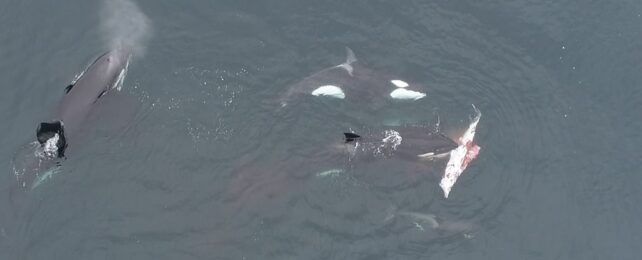In a groundbreaking discovery, scientists have observed wild orcas hunting dolphins off the coast of Chile for the first time. This rare event marks a significant addition to our understanding of orca behavior in the region. While orcas, or killer whales, are known to hunt various marine species, including seals and fish, this is the first documented instance of them targeting dolphins in Chilean waters. The findings highlight the complex predatory tactics of orcas and open up new avenues for studying their hunting strategies and social behaviors.
Orcas are highly intelligent and social creatures, known for their diverse hunting methods that often vary by region and prey type. The observation of dolphin hunting adds another layer of complexity to their already sophisticated behavior, furthering the scientific community's fascination with these apex predators.
Researchers plan to continue monitoring the orca population to learn more about this new behavior and its potential implications for marine ecosystems.
What's even more surprising is the way the orcas then divvied up and shared their kills, similar to the way a human family might: the mother holding the kill in her mouth so her baby could take bites.
"Just in 2020 an article showed orcas hunting South American sea lions but we did not know that they may predate also on other marine mammals such as dolphins and even whales!" García Cegarra told ScienceAlert.
"But the most impressive was to observe with the use of a drone the behavior of sharing the dolphin meat among orca group members. We observe how the mother and the calf feed first and later the adult male. It was like a ritual of food sharing similar to humans when we eat on Sundays with our grandmother and grandfather. I remember when I was a child my grandmother used to serve me as a child first and later adults eat."
Further research will also help scientists to better understand the orcas’ social interactions, such as how they teach their hunting strategies to their young. And there are other intriguing orca behaviors that are even less understood.
For example, during one of the meals, an orca calf approached the scientists’ boat with a mouthful of dolphin meat, García Cegarra said in the email. A similar interaction was previously documented in Australia between an orca and a diver, but had never been observed in the Humboldt Current. One interpretation is that the orca was offering to share its food, but scientists don’t know that for sure, García Cegarra said.
However, the odds of documenting orca hunts in the wild in this way aren’t great, she added. Orcas can swim great distances very quickly and usually travel in small groups, so orca encounters during research expeditions are usually scarce.
Read more
Asian Markets Rally as China Pledges Fiscal Support: Market Wrap Popular Diabetes and Weight-Loss Drug Linked to Reduced Opioid Overdose RiskSarah H
Also on site :
- US adds Qatari aircraft to Air Force One support fleet
- Divided House GOP seeks to pass Trump's tax bill
- Volvo Shifts Gears with First-Ever In-Car Use of Google Gemini

